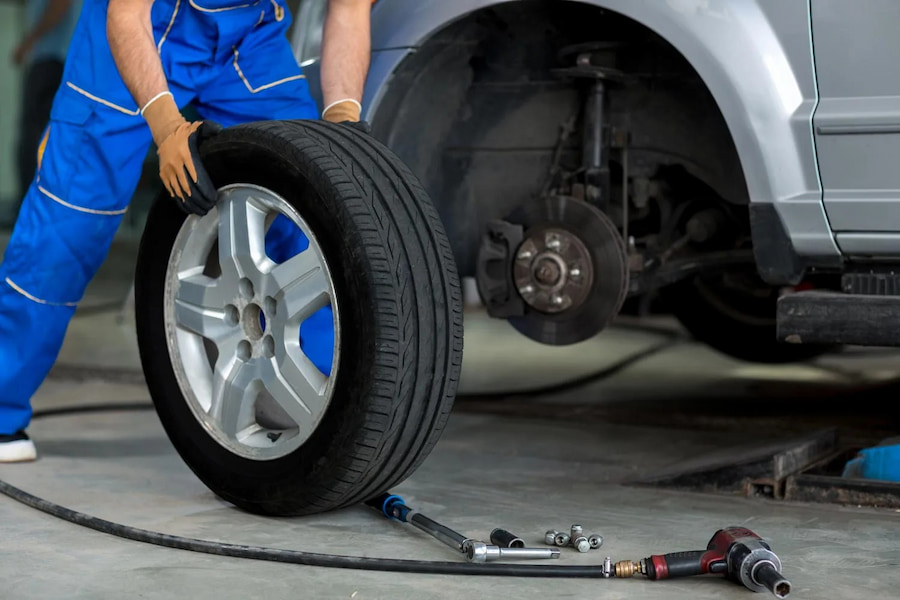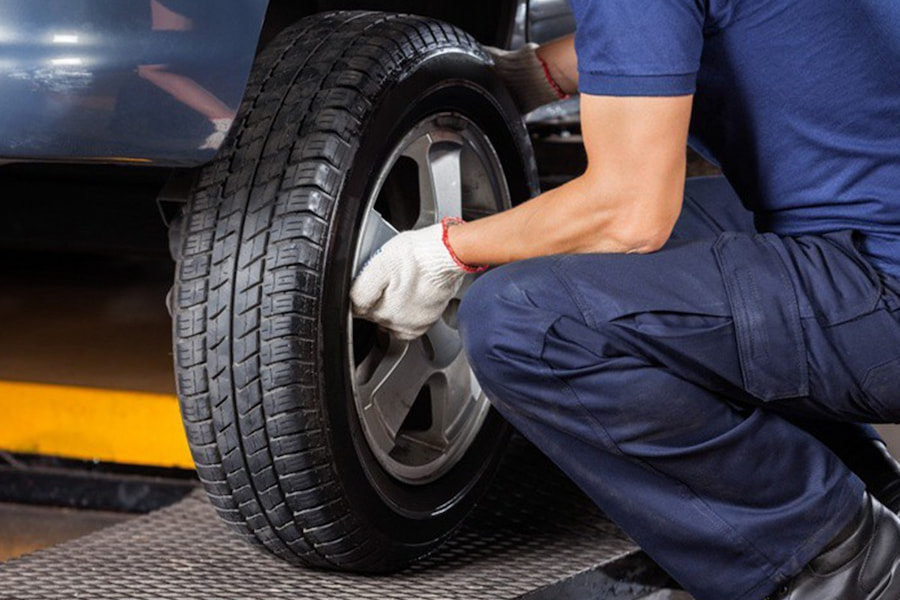Automobile
How to Know When It’s Time to Replace Your Tyres

The tyres on your car play a critical part in preserving excellent manoeuvrability and performance along the roadways in addition to being necessary for a pleasant and secure ride. Tyres experience degradation over time, just like every other part of your car, and must be changed when they have served their purpose. For both your security and the efficiency of your car, it’s critical to know whether to replace the tread on your tyres. In this post, we’ll talk about the warning signals that remind you to get a new set of tyres along with offering you some advice on how to drive safely. If you’re from Walsall then you should consider yourself to check it for yourself search for tyre shop Walsall.
Examine the Tread Depth
Arguably the most important sign of tyre deterioration is tread depth. Reduced adhesion as well as grip on the pavement occurs from your tyres’ declining tread depth as they get older. Use an asphalt depth measurement or the value of a penny test to determine the width of the tread depth. Lincoln’s head should be facing down as you insert the cent through the wheel groove. The tire’s tread has deteriorated and will have to be replaced if the top portion of Lincoln’s head is visible.
Verify For Unusual Wear Patterns
It’s crucial to regularly check the tyres on your vehicle for any unusual wear patterns. Unbalanced depreciation may be a symptom of foundation troubles, poor price increases, or alignment concerns. Cupping, feathering, and varying wear along the inner or outer margins are examples of typical abnormal wear characteristics. If you observe any of these characteristics, it is important to have someone with experience evaluate your car and think about getting new tyres.
Watch for Bulges and Cracks
Check your tyres’ sidewalls to identify cracks, cuts and bulges. Accidents may result from running into curbs, road imperfections, or various road obstacles. The skeletal strength of the tyre becomes compromised by cracks and bulges, which raises the possibility of an explosion. It’s critical to change the tyre as soon as you detect any of the aforementioned signs.
Take Age into Account
Even if they haven’t been driven around thoroughly, tyres still wear down. Because of weather exposure, temperatures and ultraviolet rays, the rubber compositions in tyres deteriorate over time. Although tyres do not have a set lifespan, the majority of manufacturers advise changing tyres that are more than six and ten years old, irrespective of tread depth. Look for a four-digit DOT (Department of Transportation) number on the outside attached to your tyres. The current week and the calendar year of manufacturing are indicated by the final two digits.
Be Alert to Noise or Vibration
It may be an indication that your tyres have become worn unevenly or are experiencing an internal problem if you notice strange sensations or excessive noise from the road when driving. Additionally, vibrations may be a sign of unbalanced or misaligned wheels. In any event, it’s critical to get your car evaluated by a mechanic so they can identify the problem and, if necessary, change the tyres.
Keep an Eye on Pressure Loss
Utilise a dependable pressure gauge to verify the information on the tyre pressure regularly. Consistent tyre loss of pressure could indicate a leak, perforation, or harm to the valve stem. Travelling with underinflated tyres affects the engine’s efficiency and increases the likelihood of tyre breakdown. Have the tread on the tyre examined and then have it fixed or changed as necessary if you observe an obvious decrease in resistance.
Conclusion
In conclusion, preserving motorist safety and achieving peak performance from your car depends on knowing when you should change your tyres. You can make sure that the tyres on your vehicle are in excellent condition including repairing them around the appropriate time by keeping an eye out for wear indicators, routinely checking your tyres, and asking a professional for guidance when necessary. Always keep in mind that preventative tyre management is essential for safe and comfortable travelling.
Also, read this: The Latest Trends and Technologies in Car Protection
-
Blog1 year ago
MyCSULB: Login to CSULB Student and Employee Portal – MyCSULB 2023
-
Android App3 years ago
Cqatest App What is It
-
Android1 year ago
What Is content://com.android.browser.home/ All About in 2023? Set Up content com android browser home
-
Software2 years ago
A Guide For Better Cybersecurity & Data Protection For Your Devices
-
Latest News2 years ago
Soap2day Similar Sites And Alternatives To Watch Free Movies
-
Android2 years ago
What is OMACP And How To Remove It? Easy Guide OMACP 2022
-
Android3 years ago
What is org.codeaurora.snapcam?
-
Business2 years ago
Know Your Business (KYB) Process – Critical Component For Partnerships






















